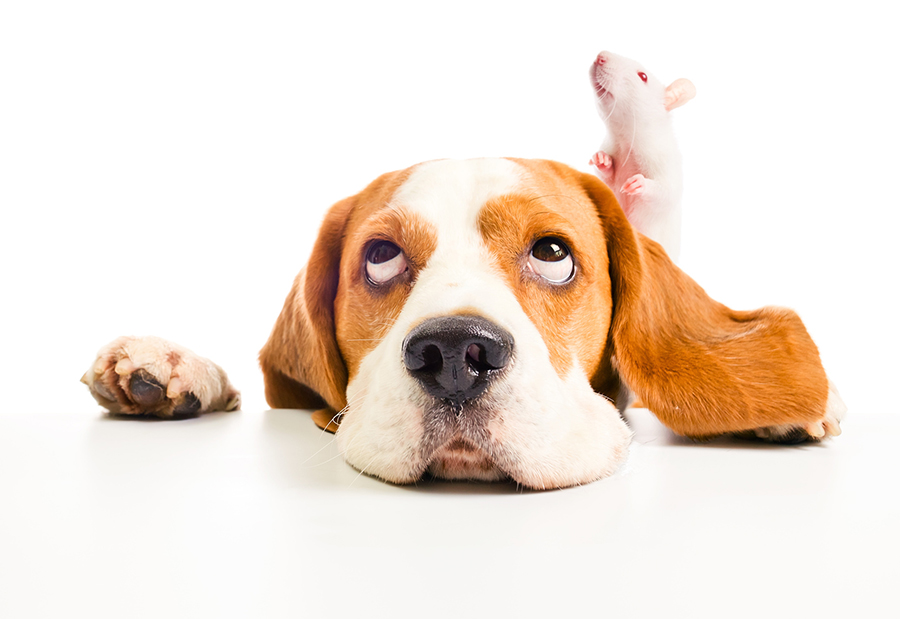Rodenticide Poisoning (Rat Bait Poisoning)
The most commonly used rat and mouse baits belong to the anticoagulant rodenticide group of chemicals. This group of chemicals can be split into two groups:
1st Generation Anti-coagulants: |
|
2nd Generation Anti-coagulants: |
|
Animals can be affected with these poisons if they eat the poison itself or if they eat a rat or mouse that has recently eaten the poison. For this reason even if the poison is well out of reach of the dogs and cats they are not safe from it.
Symptoms
Anti-coagulant poisons work by interfering with the clotting mechanisms in the blood and can therefore cause animals to bleed. This may be obvious, for example bleeding from the anus or blood in the urine, but more commonly the bleeding is internal and cannot be seen. The length of time from ingestion of the baits to the onset of symptoms varies considerably with how large the dose was and whether the animal has had continuous access to the baits over a period of time. Symptoms may occur up to 2-4 days after the bait was ingested.
Most animals are weak and lethargic. They may have pale or white gums. They may have shallow respiration or laboured breathing and possibly a cough if there has been bleeding in the lungs.
Treatment
Treatment depends on the time that has elapsed since the dog or cat ate the rat bait. If you know exactly when the bait was eaten it is important that the animal is taken straight to the veterinary hospital as soon as possible. In these cases an injection to make the animal vomit, and hence remove most of the poison from the stomach, may be given.
However if the animal ate the poison sometime ago and is already showing signs (as listed above) the treatment is much more complicated. The antidote for Anticoagulant Rodenticides is Vitamin K and it is important that the circulating levels of vitamin K in the body are elevated as quickly as possible. This can be achieved by injecting the patient with vitamin K. Thereafter vitamin K needs to be given to the animal by mouth for up to 6 weeks depending on the type of rat bait eaten. The second generation rodenticides persist in the body for a longer period of time than the first generation rodenticides and therefore require long treatment times.
If the bleeding has been going on for some time or is particularly severe a poisoned animal may become severely anaemic. If this is the case the animal may have to be hospitalised and put on a drip, and possibly also be given a blood transfusion.
Non-anticoagulant Rodenticides
There is another group of rodenticides that contain Cholecalciferol (Vitamin D3) and are called Quintox. This group has a different mode of action. They act by mobilizing stores of calcium from the bone and causing abnormally high levels of calcium in the blood stream.
SYMPTOMS of this type of poison are usually quite non-specific and include loss of appetite, depression, vomiting and weakness.
TREATMENT when the time of ingestion is known is the same as described above,but once the animal is showing signs of poisoning they require immediate hospitalisation and intensive treatment with intravenous fluids, diuretics and drugs to try to reduce the calcium levels in the blood.




